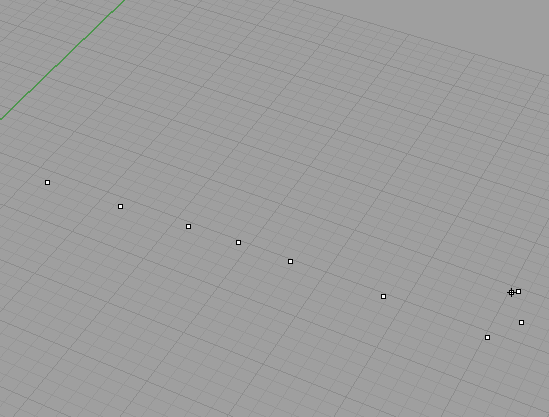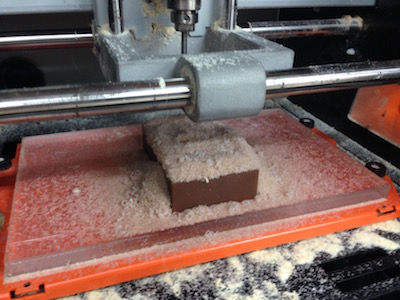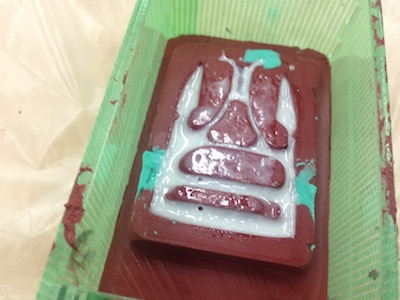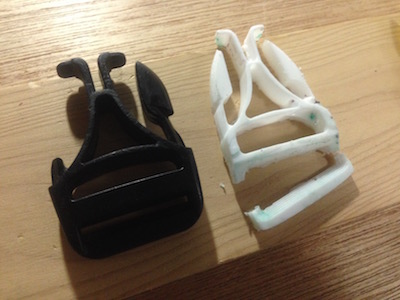Molding and Casting
I want to fix strap buckle once broken.

◆Scan by Microscribe

First, I scaned broken one by microscribe, a kind of 3D scanner.
You can prot points on Rhinoceros with pen shape device.


After roughly scaned whole shape, fix and create 3D shape.
I use Rhinoceros commands below.
- InterpCurve
- CurveThroughPt
- Split
- Sweep2
- EdgeSrf
- etc...

※ I wrote detailed instruction on Fabble for other lab member.
◆Milling by SRM-20
I used SRM-20 for milling modeling wax with 1/32 inch drill bit.- Open MODELA Player 4.
- Import stl file
- Select tool shape
- Generate tool path
- Set the center point on material by V-panel.

- Run the tool path


So I thicken them and create new tool path.
◆Molding and Casting
Let's work with clothes can be dirt.
This time, I use these materials below.
- Smooth on Silicone Rubber.
- Hobby Cast ーThis is Hard polyurethane resin.
- Make outer wall with laser cutted acrylic. Smear barrier coat on milled one.


- Measure and pour silicone rubber. Wait for 24 hours,,,, and got a mold!
Some place were not filled with silicone and has lack.
I guess measruement was a little incorrect.


- Pour cast material, and wait for a while...
It got be white and have heat!


◆Result

Finally, I got 3 types of buckle, original / 3D printed / casted.
I made them from scanned data, but their shape is little different.
I need to scan more correctly, or change model by each method.
(Ex. For casting, I think need a little bigger model.)

Sadly, casted model has no rigidity, broken.
But I think it's good try and want to use another material or new way!
Mold files is here.
FeedBack
・I can use glass fiber to reinforce.・Ex. FRP(Fiber Reinforced Plastic) → glass mat
・I can also mix strong / flexible materials.